AMD X570 Chipset
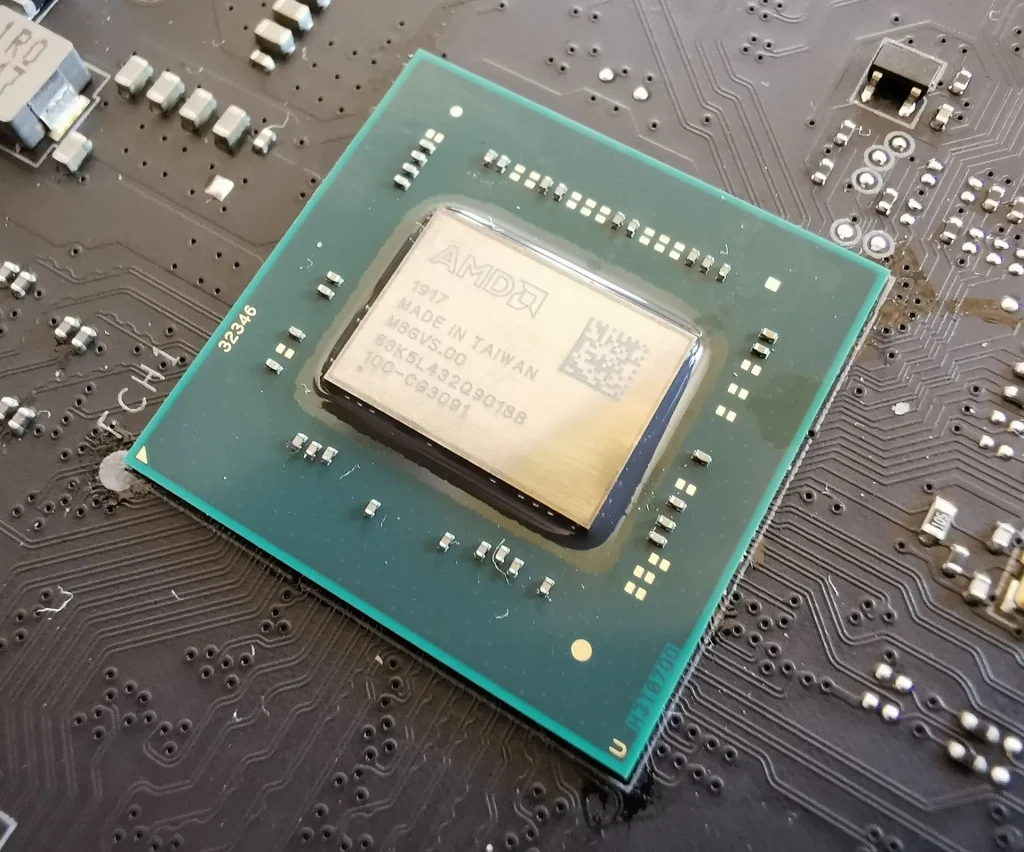
AMD X570 Chipset
AMD X570 Chipset: Unleashing the Power of Ryzen
Introduction
The AMD X570 chipset is the latest offering designed to unleash the full potential of AMD Ryzen processors. This document details the functionalities and technical specifications of the X570, highlighting its advantages and AMD’s design philosophy behind this powerful chipset.
CPU Support:
The X570 chipset supports several generations of AMD Ryzen processors, including:
- AMD Ryzen 7000 Series Desktop Processors (Latest Generation)
- AMD Ryzen 8000 Series Desktop Processors
- AMD Ryzen 5000 Series Desktop Processors (Prior Generation)
- 3rd Gen AMD Ryzen Threadripper Processors (Prior Generation)
- 3rd Gen AMD Ryzen Desktop Processors (Prior Generation)
Note: It’s important to consult the specific motherboard manufacturer’s website for the most up-to-date CPU compatibility list for your specific X570 motherboard model. BIOS updates can sometimes expand compatibility to newer CPU generations.
Key Features
- PCIe 4.0 Support: The X570 boasts support for the next-generation PCIe 4.0 standard. This doubles the bandwidth compared to PCIe 3.0, enabling significantly faster communication between the CPU, graphics card, and NVMe storage devices. This translates to smoother gameplay in high-end titles, improved responsiveness in demanding applications, and faster data transfer speeds.
- Robust Overclocking Capabilities: The X570 caters to enthusiasts by offering extensive overclocking features. It provides granular control over voltages, clock speeds, and fan curves, allowing users to fine-tune their system performance for maximum output. This advanced control unlocks the hidden potential within Ryzen processors for those seeking to push the boundaries.
- Advanced Connectivity: The X570 is equipped with a comprehensive suite of connectivity options. It supports multiple USB ports, including the high-speed USB 3.2 Gen 2 for blazing-fast data transfer rates. Additionally, it offers support for the latest networking standards, ensuring a seamless connection for online gaming and high-bandwidth applications.
- Enhanced Power Delivery: The X570 utilizes robust VRMs (voltage regulator modules) to ensure stable and efficient power delivery to the CPU. This is crucial for maintaining system stability under heavy workloads or during overclocking scenarios. The improved power delivery allows Ryzen processors to operate at their peak performance without encountering power limitations.
AMD’s Design Approach for the AMD X570 Chipset
AMD designed the X570 chipset with a focus on three key principles:
- Uncompromised Performance: The X570 prioritizes raw performance by implementing cutting-edge technologies like PCIe 4.0 support. This caters to users who demand the absolute best for high-end gaming, content creation, and professional applications.
- Overclocking Freedom: Understanding the enthusiast market, AMD equipped the X570 with extensive overclocking capabilities. This empowers users to personalize their system performance and squeeze the most out of their Ryzen processors.
- Future-Proofing: The X570 incorporates the latest standards like PCIe 4.0 and advanced connectivity options. This ensures compatibility with future high-performance components, making the X570 a future-proof investment for users building cutting-edge systems.
Comparison with Previous Chipset (X470):
| Feature | X570 | X470 |
|---|---|---|
| PCIe Support | PCIe 4.0 (24 Lanes) | PCIe 3.0 (24 Lanes) |
| PCIe Slot(s) | x16, x8/x8 | x16, x8, x4 |
| Overclocking | Extensive control | Advanced control |
| VRMs | Robust | Good |
| USB Support Gen2/Gen1 | 8/4 | 2/6 |
| Networking | Latest standards | Previous standards |
| DDR4 Support (Mhz) | 3200 | 2933 |
| SATA Ports | 8 | 8 |
| PCIe | x16, x8 | x16, x8, x4 |
| Chipset TDP | 11W | 4.8W |
Conclusion
The AMD X570 chipset represents a significant leap forward in performance and functionality. With its support for PCIe 4.0, extensive overclocking capabilities, and advanced connectivity options, the X570 caters to enthusiasts and power users seeking to build the most powerful Ryzen systems possible. AMD’s design philosophy prioritizes uncompromised performance, overclocking freedom, and future-proofing, making the X570 a compelling choice for those building cutting-edge PCs.
FAQ:
What are the performance trade-offs between utilizing bifurcation modes for M.2 storage and graphics cards?
X570 chipsets allow bifurcating the PCIe x16 slot, typically used for graphics cards, into two x8 lanes. This enables functionalities like using an M.2 adapter card to populate multiple NVMe drives. However, there are performance trade-offs:
Graphics Card Performance: Splitting the x16 slot to x8 lanes reduces bandwidth available to the graphics card. The impact on performance varies depending on the specific GPU and workload. In some cases, the performance drop might be negligible, but for high-end GPUs or graphically demanding games, a noticeable difference is possible.
M.2 Storage Performance: While bifurcation enables using multiple NVMe drives, each drive operates with reduced bandwidth (x4 or x8 lanes depending on configuration). This might not significantly affect real-world usage for most tasks. However, for professional applications heavily reliant on sustained high-speed storage access, a slight performance decrease compared to a dedicated x4 NVMe slot is possible.
The decision to utilize bifurcation hinges on your priorities. If maximizing graphics card performance is crucial, using the full x16 slot is ideal. But if you heavily rely on multiple high-speed NVMe drives, bifurcation can be a worthwhile option, especially if the graphics card performance hit isn’t substantial for your typical use case.
How does the robust VRM design of X570 motherboards influence overclocking limitations for Ryzen 7000 series CPUs compared to previous generations?
X570 motherboards generally boast robust Voltage Regulator Modules (VRMs) with high-quality components and effective cooling solutions. This translates to a significant advantage for overclocking Ryzen 7000 series CPUs compared to previous generations on X470 or B550 boards.
Improved Power Delivery: X570 VRMs can deliver cleaner and more stable power to the CPU even under heavy overclocking loads. This reduces voltage drops and thermal throttling, allowing for higher potential clock speeds.
Enhanced Thermal Management: X570 motherboards often have larger VRM heatsinks with active cooling solutions. This effectively dissipates heat generated during overclocking, ensuring optimal CPU performance and stability.
While the VRM design plays a crucial role, other factors like the specific CPU model, cooling solution, and motherboard BIOS limitations also influence overclocking headroom. However, X570 motherboards undoubtedly provide a solid foundation for pushing Ryzen 7000 series CPUs to their overclocking limits.
Beyond enabling XMP profiles, what memory timings and subtimings can be optimized on X570 to squeeze out the most performance from Ryzen processors?
XMP profiles offer a convenient way to set memory speeds and timings, but X570 allows for granular memory tuning to potentially unlock further performance gains for Ryzen processors. Here are some key timings and subtimings for optimization:
Primary Timings: These include CAS Latency (CL), tRCDWR, tRP, and tRAS. Reducing these timings can improve memory latency and overall system responsiveness. However, finding stable configurations requires careful adjustments and testing.
Subtimings: These encompass a broader range of parameters influencing memory performance and stability. Optimizing subtimings like Command Rate (CR), Gear Down Mode, and ProcODT can offer further performance tweaks, but the process is intricate and requires advanced user knowledge.
It’s crucial to approach memory tuning cautiously. Unstable configurations can lead to crashes or system instability. Researching resources specific to your CPU and memory kit is recommended before venturing into advanced memory tuning on X570.
How can advanced users prioritize PCIe lane allocation between multiple graphics cards and NVMe storage devices on an X570 motherboard using BIOS settings?
X570 chipsets offer some flexibility in allocating PCIe 4.0 lanes between devices. However, the specific options and terminology might vary depending on the motherboard manufacturer and BIOS version. Here’s a general approach:
Identify Lane Configuration Options: Access the BIOS and navigate to the PCIe settings section. Look for options related to “PCIe Lane Configuration” or “PCIe Slot Bifurcation.”
Prioritize Based on Needs: If maximizing graphics card performance is essential, ensure the primary PCIe slot is set to run in x16 mode. If you prioritize utilizing multiple NVMe drives, consider bifurcating the lane allocation. Some motherboards might offer options to dedicate specific x4 or x8 lane configurations to M.2 slots.
Consult Motherboard Manual: Refer to your motherboard’s manual for detailed explanations of specific BIOS settings related to PCIe lane allocation. This will provide precise guidance on navigating the options and understanding the implications of each configuration.
Trial and Error with Testing: Once you’ve adjusted the settings, save the BIOS configuration and reboot. Utilize benchmarking tools to gauge the impact on graphics card performance and storage drive speeds before finalizing your configuration.
Important Note: Not all X570 motherboards offer extensive lane allocation options. Some might have limited flexibility, so consulting the motherboard manual is crucial.
What are the considerations for daisy-chaining multiple USB 4.0 devices through a single X570 USB port while maintaining optimal performance?
While USB 4.0 boasts impressive bandwidth capabilities, daisy-chaining multiple devices introduces potential limitations:
Bandwidth Sharing: The available 40Gbps bandwidth gets progressively divided with each connected device in the chain. This might not be a significant concern for low-bandwidth peripherals like keyboards or mice. However, for high-speed devices like external storage drives, performance can be impacted depending on the number of devices connected and the specific workload.
Cable Length Limitations: Maintaining optimal USB 4.0 performance requires high-quality certified cables. The cable length also plays a role, with shorter cables generally recommended for maximizing signal integrity and minimizing performance degradation.
Device Compatibility: Not all devices support USB 4.0 daisy-chaining functionality. Ensure each device in the chain is explicitly designed to handle this configuration.
For optimal performance, consider connecting critical high-bandwidth devices directly to the motherboard’s USB 4.0 ports. Daisy-chaining can be a viable option for lower-priority peripherals, but keep the number of devices chained and cable lengths in mind to minimize performance drawbacks.
For a strictly single-GPU gaming system with limited future upgrade plans, what factors would justify the cost difference between an X570 and a B550 motherboard?
For a single-GPU gaming system with no plans for future upgrades requiring additional PCIe lanes (like multi-GPU setups or multiple NVMe drives), a B550 motherboard might be a more cost-effective option. Here’s a breakdown of the key differences:
PCIe Lane Availability: X570 offers more total PCIe lanes (24) compared to B550 (16). However, for a single GPU setup, the x16 slot on both chipsets provides sufficient bandwidth.
Overclocking Support: While both chipsets support overclocking Ryzen CPUs, X570 motherboards generally boast more robust VRMs, potentially enabling higher overclocking headroom, especially for demanding CPUs. If overclocking isn’t a priority, B550 motherboards can still deliver stable performance.
Futureproofing: X570 offers features like wider PCIe 4.0 support and potentially more advanced USB options. These features might be valuable if you foresee future upgrades like adding multiple NVMe drives or high-bandwidth peripherals.
If you solely focus on cost-efficiency for a single-GPU gaming system without future upgrade desires, a B550 motherboard can be a compelling choice. However, if overclocking headroom, future expandability, or the latest features are attractive, the premium for an X570 motherboard might be justified.
How does the X570 chipset handle scenarios where multiple 10GbE or 25GbE NICs are installed, will there be bandwidth limitations?
X570 chipsets can support multiple high-speed network interface cards (NICs), but there are some bandwidth allocation considerations:
PCIe Lane Sharing: X570 offers 24 PCIe lanes, but some lanes are dedicated to essential components like the graphics card and chipset functions. When installing multiple high-bandwidth NICs (10GbE or 25GbE), they will typically share PCIe lanes.
Sharing Impact on Performance: The impact on individual NIC performance depends on the specific lane sharing configuration. In ideal scenarios, each NIC might have dedicated lanes (x8 or x4), enabling them to reach their full potential. However, with multiple NICs, some lanes might be shared, leading to potential performance bottlenecks if all NICs are under heavy traffic simultaneously.
Multi-LAN Teaming Strategies: Some X570 motherboards support multi-LAN teaming technologies that can aggregate the bandwidth of multiple NICs for theoretically faster connections. However, the effectiveness of this approach depends on factors like switch or network device support and the specific workload.
It’s crucial to consult your motherboard manual and research the specific NIC models you intend to use. This will provide details on supported lane configurations and potential bandwidth limitations with multi-NIC setups on X570.
What are the advantages and disadvantages of digital vs. analog power delivery phases on X570 motherboards for high-end overclocking?
X570 motherboards come equipped with VRMs (Voltage Regulator Modules) that regulate power delivery to the CPU. These VRMs can utilize either digital or analog power delivery phases:
Digital Power Delivery: This approach utilizes digital controllers to manage voltage regulation. Advantages include:
Precise Control: Digital controllers offer finer control over voltage regulation, potentially leading to more stable and efficient power delivery, especially during overclocking.
Scalability: Digital designs can handle a wider range of voltage inputs and outputs, making them suitable for high-end overclocking scenarios.
Analog Power Delivery: This traditional approach relies on analog circuitry for voltage regulation. Advantages include:
Simplicity: Analog designs are generally simpler and potentially more cost-effective to manufacture.
Maturity: The technology is well-established, and some enthusiasts might prefer the predictability of analog behavior for specific overclocking strategies.
Disadvantages of each approach are somewhat subjective and depend on the specific implementation:
Digital Power Delivery: Can be more complex and potentially more expensive. Some users might perceive a slight delay in voltage regulation response compared to analog designs.
Analog Power Delivery: May offer less precise control over voltage regulation, potentially leading to less stability at extreme overclocking conditions.
For high-end overclocking on X570, digital power delivery VRMs are generally preferred due to their finer control and scalability. However, some experienced overclockers might achieve successful results with high-quality analog VRMs. The choice depends on individual preferences and budget considerations.
When implementing cutting-edge Ryzen CPUs on an X570 motherboard, what BIOS update procedures are recommended to ensure compatibility and stability?
Updating the BIOS (Basic Input/Output System) on an X570 motherboard is crucial when installing a new Ryzen CPU, especially with cutting-edge models. Here are some recommended procedures:
Verify CPU Compatibility: Before updating the BIOS, ensure your X570 motherboard officially supports the new Ryzen CPU model you intend to use. Consult the motherboard manufacturer’s CPU support list or website for confirmation.
Download the Latest BIOS Update: Locate the motherboard manufacturer’s website and download the latest BIOS update specifically designed for your motherboard model and compatible with your new Ryzen CPU.
Review Update Instructions: Carefully read the BIOS update instructions provided by the manufacturer. These instructions will outline the specific steps involved in the update process and any potential compatibility considerations.
Backup Current BIOS (Optional): While not always necessary, some users recommend creating a backup of the current BIOS before flashing a new update. This can be a safety measure in case of any unforeseen issues during the update process.
Use a Reliable Power Source: Ensure your system has a stable power supply during the BIOS update process. Power fluctuations can corrupt the BIOS update and potentially render your motherboard unusable.
Follow the Update Procedure Carefully: Each motherboard manufacturer might have slight variations in the BIOS update process. Meticulously follow the specific instructions provided for your motherboard model to avoid any complications.
While PCIe 5.0 is not officially supported, are there any experimental BIOS modifications or hardware workarounds to enable limited PCIe 5.0 functionality on X570 boards?
It’s true that X570 chipsets don’t officially support the next-gen PCIe 5.0 standard. However, there have been discussions and some experimentation with unofficial BIOS modifications or hardware workarounds to potentially enable limited PCIe 5.0 functionality on X570 boards.
Important Disclaimer: Attempting these methods is highly discouraged for everyday use due to several reasons:
Unstable System Behavior: These modifications or workarounds are unofficial and can introduce significant system instability. Potential issues include crashes, data corruption, or even permanent hardware damage.
Limited Functionality: Even if you manage to enable some level of PCIe 5.0 functionality, it might be limited and unreliable. Performance gains might be negligible, and compatibility with future PCIe 5.0 devices remains uncertain.
Warranty Issues: Attempting such modifications might void your motherboard warranty. In case of any hardware failures resulting from these experiments, you might not be eligible for manufacturer support.
Alternative Approach:
If future-proofing is your primary concern, consider waiting for the next generation of motherboards that will natively support PCIe 5.0. While X570 offers excellent performance with PCIe 4.0, waiting for the official adoption of PCIe 5.0 might be a safer and more reliable long-term strategy.


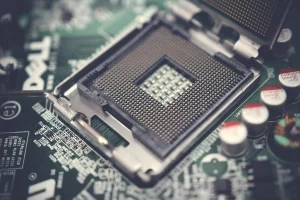
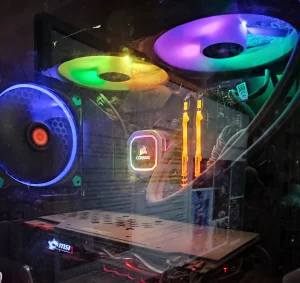
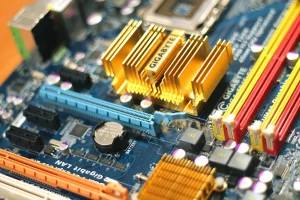
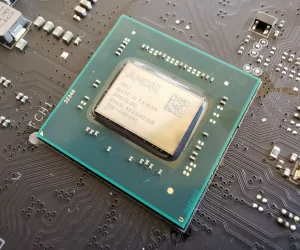
1 thought on “AMD X570 Chipset”